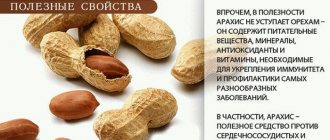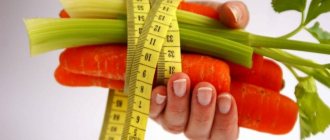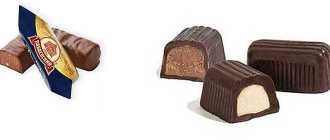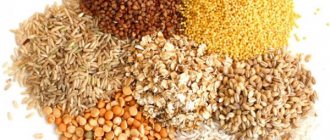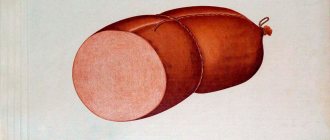Brown sugar calories
In recent years, there has been a lot of talk about brown cane sugar and its great benefits. Some even completely replace the standard white variety with the brown one, as they are confident that its energy value is much lower than that of the usual one.
Indeed, the calorie content of this product will differ from that of the white species. But 100 grams contains 378 calories, and the difference actually turns out to be insignificant. Therefore, if you replace one variety with another, there will be no significant difference in weight loss due to the same number of calories.
(380cal) (380cal) (387cal) (389cal) (380cal) (387cal) (354cal) (389cal)
Carbohydrates calories. Nutritional energy value
The energy value of food (caloric content) is the estimated amount of thermal energy (measured in calories or joules) that is produced by the human or animal body during the assimilation (catabolism) of eaten foods. Depends on the chemical composition of food (amount of proteins, fats, carbohydrates and other substances). The energy value is usually indicated on the packaging of any industrially manufactured products.
For food products, the energy value is usually indicated per 100 grams of product, or per 100 ml of drinks, and includes information on the amount of three main components - BZHU (proteins, fats, carbohydrates) and total energy value. The BJU content is presented in grams, and the caloric content is presented in kcal and kJ (1 kcal = 4.1868 kJ).
The calorie content of food is calculated by burning it in a calorimeter. At the same time, the calorie content of the same product in different tables may differ. This is due to different climatic conditions and methods of growing plants and animals.
| 9 |
| 8 |
How many calories are in a spoonful of cane sugar?
Likewise, if you measure the calorie content of cane powder in tablespoon or teaspoon volumes, the numbers will be approximately the same as for white. There are 75 kcal per 20 g tablespoon, and 19-26 kcal per teaspoon. Reed has approximately the same ratio of BPJU, but a richer mineral composition than white.
Cane product should under no circumstances be considered dietary and should not be used in the fight against obesity. Excessive consumption of cane sand and its calories will cause the same harm to the body as the use of its analogues.
Storage and usage features
Thanks to the preservation of molasses, baster is not as dry as granulated beet sugar. At the same time, long-term storage promotes sticking and hardening of the product. However, do not be alarmed, this is its natural feature.
Brown sugar is stored in closed containers in a cool, dry place without temperature changes or exposure to moisture. To prevent the baster from hardening, place a piece of orange zest in the container. It will protect the product from drying out and crystallization.
In a sugar bowl or open bag, the natural sweetener will quickly harden. Therefore, after opening the package, immediately pour the product into a hermetically sealed container.
If the baster has crystallized, pour it into a container and cover with a damp cloth. After two hours it will again acquire a crumbly structure, become soft and moist. Cane sugar is not recommended to be stored for more than a year.
Features of use:
- To make caramel, give preference to white refined sugar. The absence of molasses improves the caramelization of the concentrated sugar syrup and makes it easier to assess its readiness by color.
- Use brown sugar to make baked goods. Baking with bastro will remain soft longer, since molasses inhibits the crystallization of the sweetener in the finished product. In addition, buns cooked with cane sugar give off a slight toffee scent.
- Bastre improves the quality, facilitates and speeds up the preparation of shortbread. Brown sugar molasses is acidic, so it reacts well with baking soda, resulting in the formation of carbon dioxide, which stimulates the dough to rise.
Bastre is considered an ideal sweetener for coffee and tea, as it helps to fully reveal the taste of strong caffeine-containing drinks.
Composition of nutrients, BJU
| For quantity: 1 teaspoon | ||
| Calories – 18 | Calories from fat – 0 | |
| BJU | ||
| Total fat content | 0.01g | |
| Saturated | 0g | |
| Polyunsaturated | 0.01g | |
| Monounsaturated | 0g | |
| Cholesterol | 0mg | |
| Total carbohydrate content | 4.55g | |
| Dietary fiber | 0g | |
| Sugar | 4.24g | |
| Squirrels | 0.01g | |
| Vitamins and microelements | ||
| A – 0µg | C – 0mg | |
| B-6 – 0 mg | B-12 – 0µg | |
| D – 0µg | E – 0 mg | |
| Calcium 4.5 µg | Iron 0.08 mg | |
| Magnesium 0.95 mg | Zinc 0.3mg | |
| Potassium 13.7 mg | Sodium 0.55 mg | |
Distribution of calories for BJU: | ||
| For quantity: 1 tablespoon | ||
| Calories – 76 | Calories from fat – 0 | |
| BJU | ||
| Total fat content | 0.01g | |
| Saturated | 0g | |
| Polyunsaturated | 0g | |
| Monounsaturated | 0g | |
| Cholesterol | 0mg | |
| Total carbohydrate content | 19.54g | |
| Dietary fiber | 0g | |
| Sugar | 19.15 | |
| Squirrels | 0.01g | |
| Vitamins and microelements | ||
| A – 0µg | C – 0mg | |
| B-6 – 0 mg | B-12 – 0µg | |
| D – 0µg | E – 0 mg | |
| Calcium 7.4 µg | Iron 0.11 mg | |
| Magnesium 1.2 mg | Zinc 0.25mg | |
| Potassium 17.6 mg | Sodium 1.8 mg | |
Distribution of calories for BJU: | ||
| For quantity: 1 heaped teaspoon | ||
| Calories – 31 | Calories from fat – 0 | |
| BJU | ||
| Total fat content | 0g | |
| Saturated | 0g | |
| Polyunsaturated | 0g | |
| Monounsaturated | 0g | |
| Cholesterol | 0mg | |
| Total carbohydrate content | 7.82g | |
| Dietary fiber | 0g | |
| Sugar | 7.66g | |
| Squirrels | 0g | |
| Vitamins and microelements | ||
| A – 0µg | C – 0mg | |
| B-6 – 0 mg | B-12 – 0µg | |
| D – 0µg | E – 0 mg | |
| Calcium 2.96 µg | Iron 0.04 mg | |
| Magnesium 0.48 mg | Zinc 0.1 mg | |
| Potassium 7.04 mg | Sodium 0.72 mg | |
Distribution of calories for BJU: | ||
| For quantity: 1 teaspoon | ||
| Calories – 17 | Calories from fat – 0 | |
| BJU | ||
| Total fat content | 0g | |
| Saturated | 0g | |
| Polyunsaturated | 0g | |
| Monounsaturated | 0g | |
| Cholesterol | 0mg | |
| Total carbohydrate content | 4.59g | |
| Dietary fiber | 0g | |
| Sugar | 4.56g | |
| Squirrels | 0g | |
| Vitamins and microelements | ||
| A – 0µg | C – 0mg | |
| B-6 – 0 mg | B-12 – 0µg | |
| D – 0µg | E – 0 mg | |
| Calcium 0.55 µg | Iron 0.02 mg | |
| Magnesium 0.09 mg | Zinc 0mg | |
| Potassium 1.33 mg | Sodium 0.14 mg | |
Distribution of calories for BJU: | ||
Use in cooking

Brown cane sugar is used as a sweetener for fruit and berry juices, coffee, cocoa, tea, carbonated drinks, chocolate, and liqueurs. With the addition of bastra, the taste of liquids becomes more intense, intensified and transformed, and the aroma acquires characteristic notes of caramel, which gourmets greatly appreciate. As a sweet additive, it is used in the production of dairy products, cooling cocktails, compotes, candied flowers and fruits.
This is an indispensable product in the confectionery industry: baster is used in baking baked goods, preparing creams, mousses, jellies, ice cream, jam, sweets, cookies, glazes, cakes, marmalade. No dessert is complete without the use of sugar. It improves the consistency of the product, increases its volume, promotes the growth of yeast dough, and extends the shelf life of the product.
Bastre is a unique spice that is added not only to confectionery, but also to sauces, soups, cold dishes, salads, carbonaro, stews, and canned meat. In Swedish cuisine, cooks add brown sugar to liver pate and use it to marinate herring. In addition, the natural sweetener is used in brewing and winemaking.
Recipe for making cinnamon rolls with bastro
Ingredients:
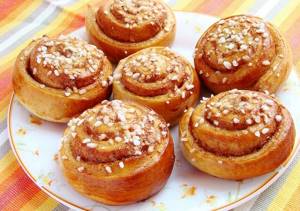
kefir 3.2% - 250 milliliters;- dry yeast – 10 grams;
- vegetable oil – 100 milliliters;
- sea salt – 2.5 grams;
- wheat flour – 750 grams;
- ground cinnamon – 15 grams;
- cane sugar – 100 grams;
- chicken egg - 1 piece;
- honey – 30 milliliters;
- butter – 70 grams.
Cooking principle:
- Dissolve the yeast in 50 milliliters of water, add 15 grams of sugar (1 tablespoon) to speed up the reaction. The mixture should rise into a foamy head.
- Mix vegetable oil with kefir, heat on the stove to 40 degrees and pour into the yeast. Add the remaining sugar, salt, chicken egg.
- Sift the flour. Add to the butter mixture.
- Knead the dough, leave it to rise for an hour.
- Melt the butter and mix the cinnamon and sugar.
- Roll out the dough into a layer, brush with oil. Sprinkle generously with a mixture of cinnamon and sugar on top and roll into a roll.
- Cut the filled dough into squares and form buns from each.
- Preheat the oven to 180 degrees. Grease a baking sheet with vegetable oil, place the buns on it, and leave on the stove for 15 - 20 minutes. Once the dough has risen, brush the top with beaten egg. Bake for 30 minutes.
- Remove the finished buns from the oven, remove from the baking sheet, and cool. Grease the surface with honey or sprinkle with powdered sugar.
Serve cinnamon rolls with tea or coffee.
Calorie content of sweeteners
Some sweet lovers who cannot completely give up sugar prefer to choose sweeteners. There are varieties of natural and synthetic origin. Natural ones include fructose, sorbitol, xylitol.
| Sweetener | Energy value |
| fructose | 375 kcal |
| sorbitol | 354 calories |
| xylitol | 367 calories |
According to the table, the nutritional value of sweeteners is almost the same as that of the natural product. The group of synthetic sweeteners includes saccharin, aspartame, sucralose, sodium cyclamate.
The calorie content of such substances is zero. Therefore, people choose such products in order to fight excess weight. Plus, sweeteners do not cause destructive harm to tooth enamel and do not provoke the development of caries.
Therefore, he eats much more products with synthetic sweeteners. Another disadvantage of such products is that they contain harmful substances that provoke the development of cancer, allergies, kidney failure and many other side effects.
Calorie content of sugar per 100 grams, in one teaspoon and one tablespoon
Sugar is a vital component on which the functioning of the body depends. Thanks to glucose, brain cells are nourished, it produces energy, due to which organs function. Usually white or light cream in color.
The color depends on the products from which sugar is extracted. Available in the form of sand or refined sugar. If stored correctly, it has no expiration date. It should be stored in well-ventilated and dry areas. Extracted from beets, cane, palm oil.
Calorie content of sugar per 100 grams
The number of calories depends on the type of sugar and the method of production. Therefore, it ranges from 280 to 450 kilocalories. Don't forget, it is found in sweets, fruits, berries, carbonated drinks and energy drinks.
White
This type is divided into:
Refined sugar is extracted through additional purification; its calorie content is less than granulated sugar. One piece of refined sugar contains 20 kilocalories, 100 grams. – 400 kcal. In 100 gr. granulated sugar contains 398 kilocalories.
Reed
Now there is a fashionable trend that says that cane sugar is lower in calories than white sugar. Many who decide to lose weight include it in their diet. But practice shows that the difference in calorie content is not high, and you won’t have to expect a big difference in weight.
Calorie content per 100 g. is 377 kcal. Despite its high calorie content, it contains a rich amount of B vitamins, magnesium, zinc and calcium. But keep in mind, it is difficult to find. Often colored white sugar is offered on the market.
Vanilla
This type is used in the preparation of confectionery and adding a vanilla flavor to hot drinks. It contains white sugar and vanilla. In 100 gr. This type contains 394 kcal.
How many calories are in one teaspoon?
This information will be useful for lovers of sweet tea and coffee. Many people, when counting calories, forget to take into account the amount in hot drinks, so most often they do not fit into the daily norm. Remember that one spoon contains 20-30 kcal. This applies to both white and reed species.
How many calories are in one tablespoon?
Beginners and experienced housewives need to know this, because when cooking, sugar is often measured in tablespoons. It is usually added to baked goods, preserves or desserts.
To please yourself and your loved ones without harming your figure, you need to remember that one tablespoon contains 80-100 kilocalories. The calorie content is greater if there is a heaping amount of sugar in the spoon.
Daily sugar intake for humans
Contained in many products, and is often replaced with the following words:
- sucrose;
- dextrose;
- fructose;
- glucose;
- lactose;
- maltose;
- syrup;
- fruit syrup.
It is also worth remembering that it is contained not only in the sweets we are used to, but also in:
- soda;
- latte;
- baking;
- yogurt;
- milk;
- honey;
- bitter chocolate.
Moreover, fruits and berries contain sugar.
The daily norm depends on the person’s age and lifestyle:
- Children under 3 years old can eat up to 25 g of sugar per day, but it is better to reduce this dose by half.
- Children from 3 to 8 years old should normally consume 35 grams. sugar per day.
- From 8 to 15 years the norm is 25-45 grams.
- The norm for women is 25-55 g.
- The norm for men is 30-60 g.
Useful properties of the product
Despite its high calorie content, it has a number of positive and negative qualities. Many still believe that it only causes harm, but if the daily norm is observed, it brings benefits to the body, and only if abused can harm the body.
Benefit:
- Granulated sugar regulates the functioning of the entire body; it is impossible to completely abandon its use.
- Stimulates brain function, which means it improves blood circulation and nervous system function. For the coordinated functioning of all organ systems, you need to eat a spoonful of sugar per day.
- The glucose contained in it regulates mental activity. Therefore, it is very important for schoolchildren and students to use it. Moreover, it improves eye condition; when working on a laptop, it is better to drink sweet tea or consume sugar in another form.
- Relieves stress, eating sweets improves mood, increases performance and relieves insomnia.
- If there is a lack of glucose, the functioning of the liver and gallbladder is disrupted, so during hospitalization, patients are prescribed intravenous infusions with glucose.
- Young children also need glucose, because it is responsible for energy production, mental activity and immunity.
- Does not affect intestinal function and metabolism.
- Healthier than artificial substitutes.
Harm from eating sugar
Harm:
- If glucose is abused, the body simply will not be able to process it completely; it will be stored in cells as fat.
- When blood sugar levels are high, diabetes mellitus develops. If the patient does not follow the diet, the consequences can be disastrous, even death.
- Excess provokes the development of caries.
- The functioning of the cardiovascular system and gastrointestinal tract also worsens.
- A large amount of sugar will soon make a person feel hungry.
- People with a sweet tooth have a calcium deficiency, which leads to weakened bones and causes gout.
- Blood pressure increases.
Sugar has a high calorie content, which depends on the method of production and its type. It is worth considering the amount of sugar for children, pregnant and nursing mothers. It is found not only in chocolate, but even in dairy products and some berries, and it is responsible for the functioning of nervous activity, improves mood and performance, if not abused.
In excess, it spoils the condition of the skin, bones and the functioning of some organs. It can also cause diabetes and obesity, you need to consider its calorie content and your daily calorie intake in order to lose weight.
Source: https://fitburn.ru/pitanie/pp/skolko-kalorij-soderzhitsya-v-saxare.html
Daily sugar intake for women and men
In accordance with WHO standards, the percentage of calories that enter the body with sugar should be no more than 10% of the total. For men, this sweetener norm is up to 9 teaspoons, for women – 6.
But this number needs to take into account more than just the number of teaspoons of sweetener that have been added to drinks or certain dishes. You need to count the amount of sweetener in all food eaten per day. For example, a glass of a sweet carbonated drink with some sweets can pay for the entire daily requirement in one go.
Production technology
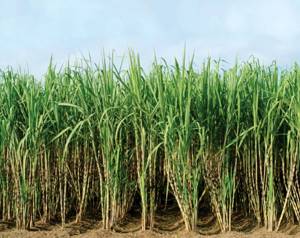
To obtain bastra, the reed stems are cut before flowering. The amount of fiber in them is 8 - 12%, sugar - 18 - 21%, salts, proteins and water - 67 - 73%.
Cut stems are crushed using iron forks and special knives. This procedure is done at least 5 times, then the juice is squeezed out of the cake, which contains water and aromatic substances (81%), sugar (18.36%), salts of organic acids (0.29%), nitrogenous mucilage (0.29%) , starch (0.1%). To separate protein substances (0.03%), freshly slaked lime is added to it, and the resulting mixture is heated to 70 degrees Celsius. The hot, almost black syrup is filtered and evaporated until sugar crystals are obtained. The bastra is then dried with hot air.
Interestingly, the cuttings of the plant produce a harvest every year for 30 years.
A distinctive feature of sugar cane compared to beets as a raw material is the high content of reducing compounds. Thanks to this, less lime is required to clean the bastra.
After processing, the crushed cane stalks are taken back to the fields, where they serve as natural fertilizer. The sugar content in concentrated freshly squeezed juice reaches 65%.
The full production cycle of bastra from loading raw materials to obtaining brown crystals takes a day. The quality of the finished product depends on the condition of the stems, their fullness of juice, compliance with the technological process, product packaging, and storage conditions.
The color of a properly made bastra varies from golden to brown and depends on the raw material (molasses used), without foreign inclusions. The mass fraction of moisture in it should not exceed 0.25%. Brown sand has a characteristic caramel aroma and taste.
Cane sugar is less sweet than beet sugar.
When purchasing, pay attention that the baster is free-flowing, without lumps. The presence of pieces indicates a violation of the storage conditions of the product (increase in air temperature above 30 degrees, and relative air humidity - 80%). As a result, the bastra becomes wet and sticky, the crystals grow together into lumps, and growths form. In addition, humidification triggers microbiological processes, as a result of which the product becomes unusable.
Sweeteners - pros and cons
Sweeteners help avoid deterioration of the pancreas, metabolic disorders, obesity, the appearance of cholesterol plaques on the walls of blood vessels and more. True, they have negative sides. Their use can provoke the development of pathological processes. There is a relationship with cancer, diseases of the genitourinary system, and allergies. Sucralose is by far the most advanced analogue. She has practically no contraindications. Only the individual sensitivity of the body can make itself felt. There are no calories in sweeteners. The taste may differ from the taste of sugar, and significantly.
Tips for safe intake
Let's consider the key factors for proper intake of cane sugar without harm to health:
- Replace any white sugar with brown sugar. If it is impossible to give up simple carbohydrates, it is recommended to give preference to those that are healthier.
- Careful rationing of consumption . Women should not take more than 25 grams per day, and men should not take more than 37.5 grams. It is also necessary to take into account that surrounding foods (carbonated drinks, juices, candy bars, etc.) are loaded with added sugar.
- Distribution throughout the day . Simple carbohydrates cannot be consumed at once; it is better to do this in small portions (0.5-1 tsp) several times a day.
It is also important to monitor your own self-control and avoid overeating simple carbohydrates. In order to limit (suppress) cravings for sweets, it is recommended:
- use natural healthy sweeteners (for example, stevia);
- increase the proportion of whole fruits and vegetables in the diet;
- eat food more often (4-6 times a day);
- use spices and products with a bright taste (ginger, lemon), as they reduce cravings for sweets;
- drink enough liquid (at least 2.5-3 liters per day).
Regulating sugar consumption is one of the important tasks in nutrition culture, allowing you to maintain health for many years.
Starbucks coffee calories
Natural coffee is an excellent aid for gaining harmony. In order to benefit from consuming this drink, do not abuse it, eat right and try to get proper rest.
- Stimulates metabolism, speeds up metabolism.
- The drink has a diuretic and mild laxative effect.
- Stimulates mental activity, improves the ability to concentrate.
- Suppresses the feeling of hunger, which allows you to eat less food.
- Improves mood (due to taste and aroma).
- The grain contains antioxidants that slow down the aging process.
There is a solution... or the whole truth about sweeteners
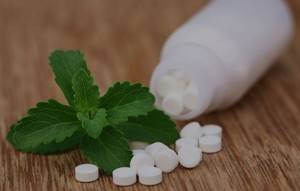
It is sometimes quite difficult to deceive the taste buds. If we are used to constantly drinking aromatic coffee with sugar, then a sweetener will only spoil the taste of our favorite drink. At least that's what the person thinks.
Sweeteners do not contain sucrose in its pure form. The taste of these additives is sweetish, but significantly different from crystalline granulated sugar. Sugar substitutes are recommended not only for people suffering from various types of diabetes, but also for those who want to maintain a slim figure.
Advice! When choosing a sweetener, it is advisable to consult a specialist. Only natural products made from plant components, for example, stevia, will be considered beneficial.
Sugar substitutes help a person wean himself off this high-calorie sweetness. Over time, taste buds adapt, and a person can easily live without granulated sugar.
Unlike this sweetener, substitutes do not contain sucrose, as well as a huge amount of calories. Sometimes nutritionists advise introducing such a product into the diet of people who are struggling with excess body weight.
Harm and contraindications
Brown (unrefined) sugar is less harmful to human health than white (beet) sugar. However, in this case, it is not the product itself that is dangerous, but its excess consumption.
According to dietary recommendations, the daily allowance for simple sugars for adults is 50 grams.
According to the Association of Cardiologists (USA), this indicator is:
- for women – 25 grams (3-4 teaspoons);
- for men – 37.5 grams (5 teaspoons).
Despite all the simplicity, approximately ¾ of the world's population does not follow these tips.
With excessive intake of any sugar, including brown sugar, the following complications may develop:
- Obesity. Sugar causes the formation of fat depots, mainly in the abdominal area - the most dangerous.
- Decreased glucose tolerance . Sugar causes sharp spikes in blood glucose levels after consumption. When the norm is exceeded, such jumps become frequent, which reduces the sensitivity of peripheral tissues to the hormone insulin. With this development of events, sugar cannot be utilized by cells and is constantly in elevated concentrations in the blood. This is how type II diabetes mellitus is formed.
- Skin aging . Simple carbohydrates cause early aging and increase the risk of acne.
- Changes in brain function . Small amounts of sugar, due to the presence of B vitamins, stimulate the functional activity of the brain. Taking large amounts of simple carbohydrates can cause depression, cognitive impairment and contribute to early onset of dementia.
- The appearance of malignant tumors . Currently, a connection has been established between the abundance of sugar in the diet and cancer of the following organs: esophagus, pleura, small intestine, endometrium.
- Deterioration of dental health . Sugar is food for a host of microorganisms that destroy tooth enamel.
Brown cane sugar can be eaten by women during pregnancy and breastfeeding, and it is even permissible to exceed the daily norm by 25-30%.
Cane sugar is not a harmless food product. In the absence of self-control, it causes complex and irreparable damage to health.

